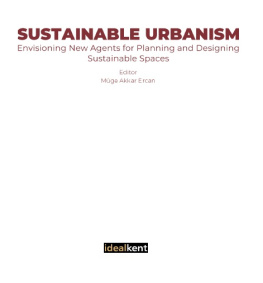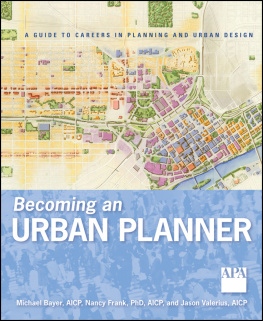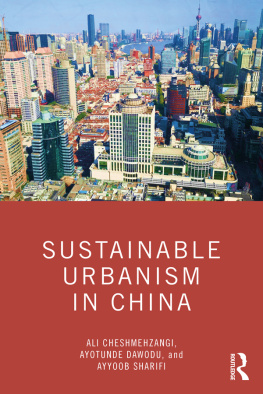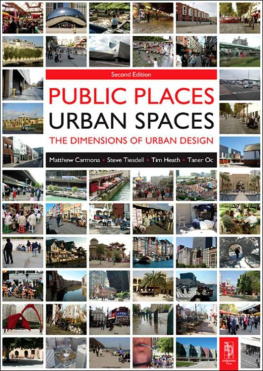
Cover images: ArtVaider/iStockphoto
Cover design: Wiley
This book is printed on acid-free paper. 
Copyright 2018 by John Wiley & Sons, Inc. All rights reserved
Published by John Wiley & Sons, Inc., Hoboken, New Jersey
Published simultaneously in Canada
No part of this publication may be reproduced, stored in a retrieval system, or transmitted in any form or by any means, electronic, mechanical, photocopying, recording, scanning, or otherwise, except as permitted under Section 107 or 108 of the 1976 United States Copyright Act, without either the prior written permission of the Publisher, or authorization through payment of the appropriate per-copy fee to the Copyright Clearance Center, 222 Rosewood Drive, Danvers, MA 01923, (978) 750-8400, fax (978) 646-8600, or on the web at www.copyright.com. Requests to the Publisher for permission should be addressed to the Permissions Department, John Wiley & Sons, Inc., 111 River Street, Hoboken, NJ 07030, (201) 748-6011, fax (201) 748-6008, or online at www.wiley.com/go/permissions.
Limit of Liability/Disclaimer of Warranty: While the publisher and author have used their best efforts in preparing this book, they make no representations or warranties with the respect to the accuracy or completeness of the contents of this book and specifically disclaim any implied warranties of merchantability or fitness for a particular purpose. No warranty may be created or extended by sales representatives or written sales materials. The advice and strategies contained herein may not be suitable for your situation. You should consult with a professional where appropriate. Neither the publisher nor the author shall be liable for damages arising herefrom.
For general information about our other products and services, please contact our Customer Care Department within the United States at (800) 762-2974, outside the United States at (317) 572-3993 or fax (317) 572-4002.
Wiley publishes in a variety of print and electronic formats and by print-on-demand. Some material included with standard print versions of this book may not be included in e-books or in print-on-demand. If this book refers to media such as a CD or DVD that is not included in the version you purchased, you may download this material at http://booksupport.wiley.com. For more information about Wiley products, visit www.wiley.com.
Library of Congress Cataloging-in-Publication Data
Names: Farr, Douglas, author.
Title: Sustainable nation : urban design patterns for the future / by Douglas Farr.
Description: Hoboken, New Jersey : John Wiley & Sons, Inc., [2018] | Includes index. |
Identifiers: LCCN 2017024943 (print) | LCCN 2017037603 (ebook) | ISBN 9781118417911 (pdf) | ISBN 9781118415351 (epub) | ISBN 9780470537176 (cloth)
Subjects: LCSH: Sustainable urban development. | City planningEnvironmental aspects. | Urban ecology (Sociology) | Urban health.
Classification: LCC HT241 (ebook) | LCC HT241 .F37 2018 (print) | DDC 307.1/216dc23
LC record available at https://lccn.loc.gov/2017024943
To the loving memory of my parents,
Edwin Allen Farr and Doris Ingrid Magnuson Farr.
Foreword
To understand human history, start with the street. In the pattern of cities is the story of civilization.
Cities and the vibrant academic, artistic, financial, and political cultures they contain are where many of history's great ideas, social movements, and revolutions have naturally emerged and blossomed over centuries.
But as human ideas and ideals have evolved, the development of the physical city itself has been less revolutionary and less recognized. When I visit and speak in a city, whether Santiago, Seattle, or Stockholm, I like to show people a picture of a local street that was taken a century ago. I take this grainy sepia or black-and-white street image from the Internet archives and line it up alongside a second, modern picture of that same street. Almost invariably, the side-by-side comparison shows how an early 20th-century street, formerly populated with people, horse-and-carriages, streetcars, and street vendorsand brimming with all kinds of possibilitieswas utterly lost to the motor vehicle. Brick buildings have been replaced by steel skyscrapers, and streetcars have been supplanted by nondescript, black Ubers, but the people have virtually disappeared from the streets. Little by little, and then all at once in the mid-20th century, we ceded our cities to our vehicles, and it was barely noticed. We didn't merely forget what the street used to be, we even forgot to ask the question of what and who our cities should be built for. We lost the plot because we missed the pattern.
Patterns, by their very essence, are discernable only over time and with repetition, so they may have been there long before they are even detected, much less responded to. We tend not to notice change that occurs slowly, like the evolution of our physical cities. This slowness means that we tend not to recognize impending disaster. We can readily identify the signs of war, crisis, and social and political dissolution that have passed, but we can't see it when it is staring us in the face. Global climate change may be the ultimate example of this. All nations, peoples, and industries are vulnerable, yet we haven't sufficiently developed to the point of acting with the necessary urgency.
We are at a point of cultural self-awareness where we are not bound to merely identifying past patterns, but can consciously create new ones to avert catastrophe. Looking for new patterns isn't just a search for new behaviors, routines, and actions; it's a fundamental part of being human. It requires ascertaining where we are, where we want to be, and how we can get there.
So, what stands between us and a literal Sustainable Nation? Merely ourselves. Change requires first that we change our minds. If we put a fraction of the effort into reinventing the world that we do unconsciously re-creating and reinforcing what is already there, we can make fast progress.
By changing our thinking, we can look more expansively at the problems we're trying to solve. We don't just need driverless or fuel-efficient cars to save our cities, we need better designed cities so we don't need cars in the first place. We don't just need cleaner and healthier air, we need more inviting, active streets where people have healthier options for getting around using their own energy, reducing emissions in the process.
One feature that characterizes human progress is the act of attempting something that has never been tried before. Whether in science, literature, culture, or technology, we celebrate innovation. It is beyond time that we name it and celebrate its role in the well-designed city, for it is on cities' mutable but sturdy bedrock that a Sustainable Nation can be built.
Janette Sadik-Khan
Preface
An Epic Journey
All great literature is one of two stories; a man goes on a journey or a stranger comes to town
Leo Tolstoy
For millennia, people have been inspired by stories of epic journeys that lead to a better future. Literature, from The Odyssey to The Hobbit, is filled with narratives of challenging quests and the range of motives for making them: for honor, adventure, or self-discovery. In real life, the campaigns that inspired our fastest societal changeFranklin Delano Roosevelt leading the U.S. to mobilize and prevail in World War II; Martin Luther King, Jr., fighting for civil rights; Earth Day leading to the environmental movementwere all framed as ambitious journeys, as campaigns to achieve a better world: rid of Hitler and war; with equal opportunity for all; and pollution-free. Big important ideas.
Next page







